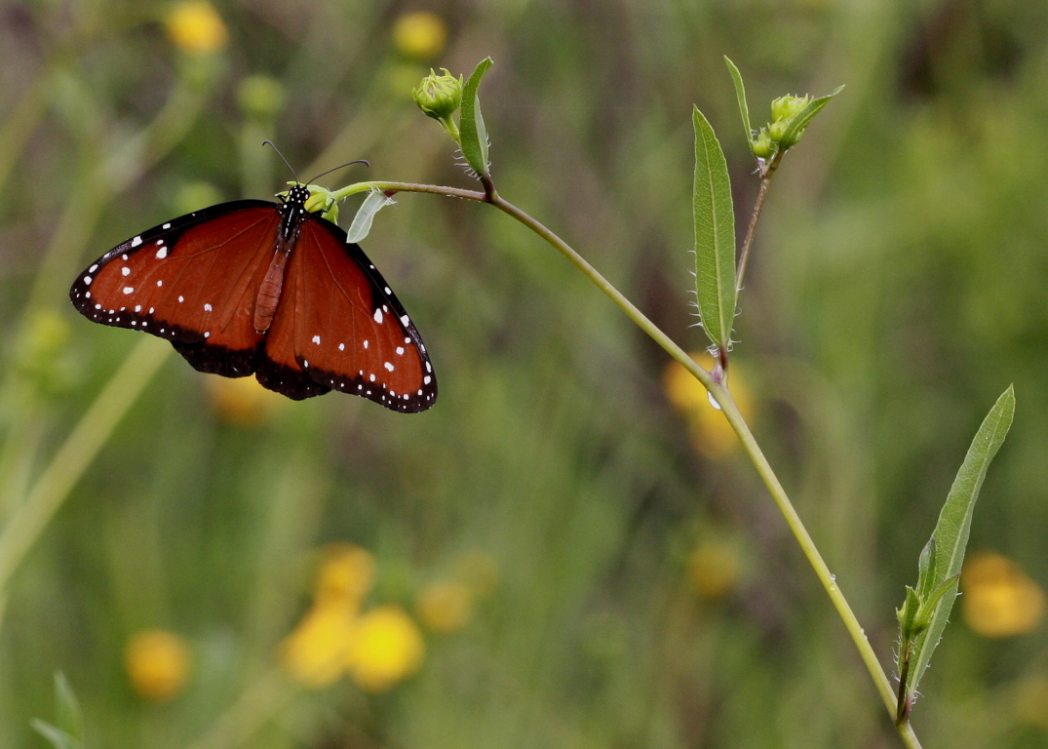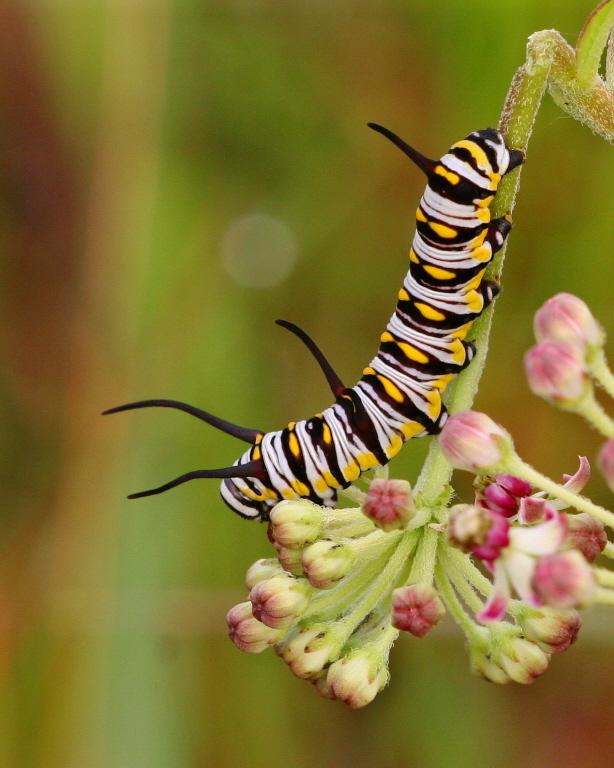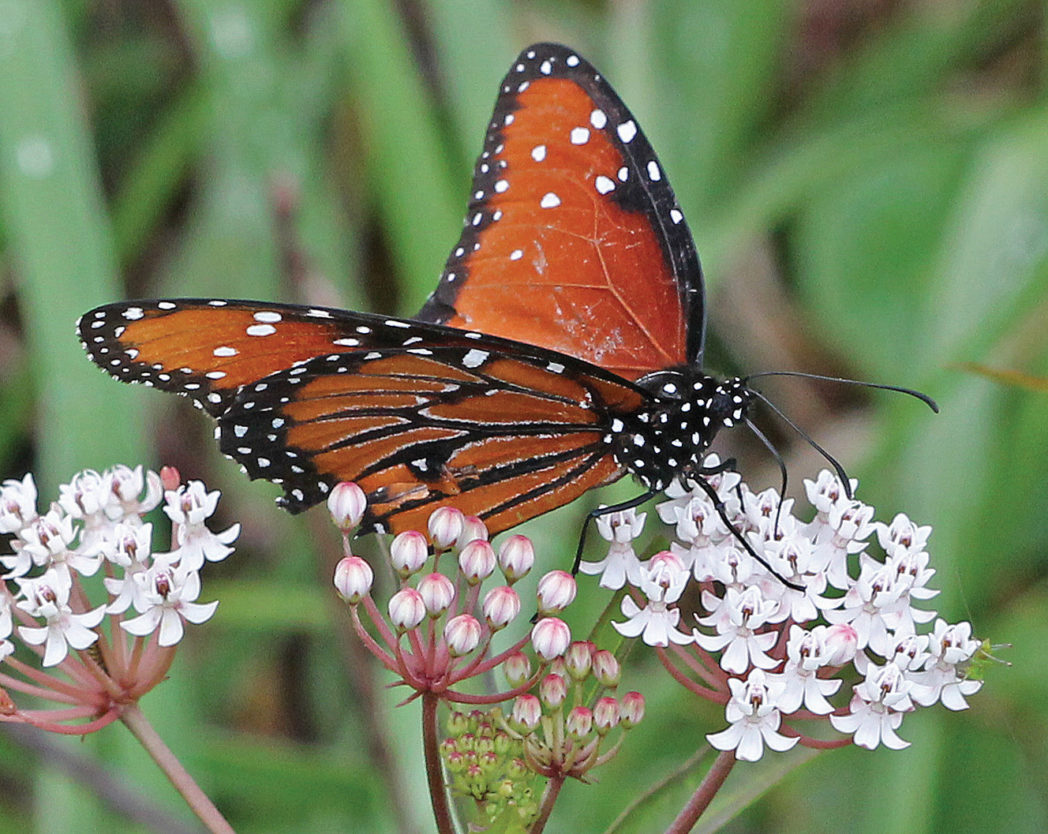Queen butterfly
“Know your native pollinators” is a series of articles that will help you identify and appreciate Florida’s varied pollinators, including bees, wasps, butterflies, moths, beetles, flies, birds and bats. Pictured above: Queen butterfly on Swamp milkweed (Asclepias incarnata) by Mary Keim.
Queen butterflies are similar in appearance to the well-known Monarch butterflies and are often mistaken for them. Learn the differences between these royally-named cousins.
CLASSIFICATION
Class: Insecta
Order: Lepidoptera
Family: Nymphalidae
Subfamily: Danainae
Genus species: Danaus gilippus
FORAGING PREFERENCES
Like the Monarch butterfly, Queens favor milkweed as a host plant and for nectar. Queen butterflies also nectar from other flowers, including Frogfruit (Phyla nodiflora), Beggar’s tick (Bidens alba), Mistflower (Conoclinium coelestinum) and native Lantana (Lantana involucrata, Lantana depressa or L. canescens).

Queen butterfly on Southeastern sunflower (Helianthus agrestis). Photo by Mary Keim.
IDENTIFICATION
A little smaller than Monarchs, the wingspan of the Queen butterfly is 6.7–9.8 cm. Both species have orange-brown coloration, although Monarchs are lighter and more orange. Similar to the Monarch, the underside of the Queen’s hindwing has black veins and borders, and two rows of white spots along the border. The underside of the Queen’s forewing does not contain these black veins. The dinstinction between the two species is most obvious when their wings are open. Monarchs display black veins, whereas Queens lack these bold black lines on the upper side of the wing. Like Monarchs, Queen males have two pheromone scales on the upper-side of their hindwing.
The Queen also bears a great resemblance to Viceroy and Soldier butterflies. Viceroys, like Monarchs, have dark veins across the upper side of the wing. The Soldier is perhaps the most similar to the Queen butterfly, but still has slightly more defined veins on its upper side.
HABITAT
Queen butterflies are found in peninsular Florida throughout the year. Their range stretches from the southern United States through the West Indies and Central America, south to Argentina. Favorite habitats of the Queen are open and sunny, including fields, dunes, deserts, pastures, roadsides and along waterways.
LIFE CYCLE
The Queen caterpillar is yellow, white and black, almost identical to a Monarch caterpillar, but identifiable through the third set of filaments in its mid-section. These filaments are sensory organs called tentacles that “see” through touch.
The chrysalis is soft when first formed and could be damaged if touched. Within a day, the chrysalis will harden and become either green or pink. The hardened chrysalis is safe to touch as long as hands are free of pesticides. The Queen’s chrysalis is a smaller version of the Monarch’s.

Queen caterpillar on Longleaf milkweed (Asclepias longifolia). Photo by Mary Keim.
References:
- Butterflies at Home. “Queen Butterfly.” 2020.
- Butterfly Fun Facts. “Queen Butterfly – Danaus gilippus” 2020.
- INaturalist. “Queen Butterfly.” Apr 9, 2020.
- Lotts, Kelly and Thomas Naberhaus, coordinators. 2017. Butterflies and Moths of North America.(Version 05272020)
- Maeckle, Monica. “Queen, Monarch Caterpillars and Butterflies: How to Tell the Difference.” Texas Butterfly Ranch. Dec. 7, 2012.
- McCullough, Amy. “Monarch vs. Queen.” University of Texas at Austin. Aug 10, 2017.

